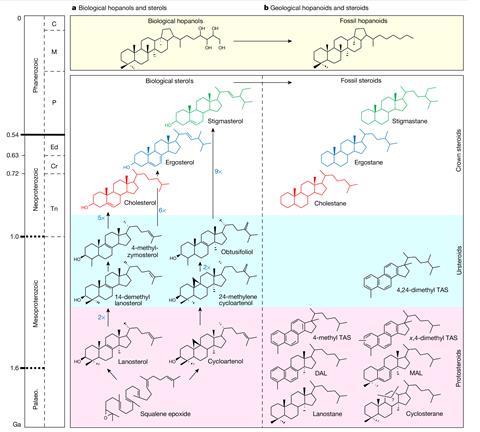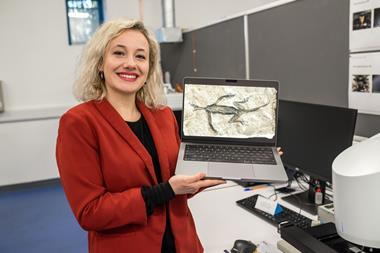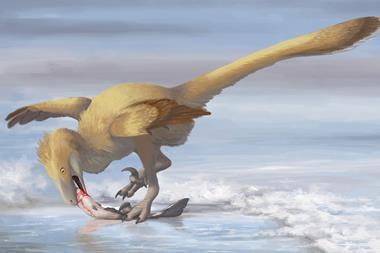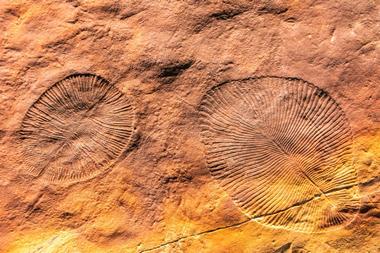Fossilised ‘protosteroid’ molecules discovered in 1.6 billion year old rocks could be signs of a hidden world of ancient organisms belonging to the earliest forms of complex life. The finding suggests that short-lived precursors in modern steroid biosynthesis were once functional end products in their own right, solving a decades-old mystery surrounding the early evolution of eukaryotes.
Primordial precursors of modern steroid compounds were first posited by biochemist Konrad Bloch who helped decipher the biosynthetic pathway of cholesterol, co-winning the Nobel prize in physiology or medicine in 1964. He believed that hundreds of millions of years ago, primordial eukaryotes – organisms whose cells possess a nucleus and which ultimately led to all animals, plants, fungi and algae living today – probably lacked the full sterol biosynthetic pathway. Instead, he suggested they likely generated ancestral intermediates that he dubbed ‘ursterols’, which he suggested were fully adapted end products that evolved towards modern steroids.
However, no evidence of these primitive molecules had ever been found in the geological record, and Bloch himself was sceptical that they would even be preserved. Meanwhile, regular sterols, which are a known biomarker for detecting eukaryotes in the fossil record, are mysteriously absent from rock samples over 800 million years old.

Now, Jochen Brocks at the Australian National University in Canberra and Benjamin Nettersheim at the University of Bremen, Germany, and their colleagues have found fossils of these elusive protosteroids from as far back as 1.64 billion years ago. The discovery suggests that Bloch’s hunch was correct and offers a plausible explanation for the absence of sterols beyond 800 million years ago.
‘Realising that 1.64 billion-year old rocks contained fossil protosteroids was a true eureka moment for us,’ says Nettershiem. ‘We were quite amazed to discover how ubiquitous these compounds turned out to be in virtually all biomarker bearing samples.’
The team made the discovery by analysing rocks from the Barney Creek Formation in Australia’s Northern Territory. After crushing them into a fine powder, organic solvents were used to extract oils and bitumen which are known to harbour molecular fossils of sterols. While previous studies had always looked for regular sterols, the team decided to look for unusual sterols by first developing plausible derivatives in the lab. This meant that the researchers had a clearer idea of what to look for when analysing the oils and enabled them to identify the fossil protosteroids for the first time.
‘Konrad Bloch would have been delighted had he lived to see this,’ comments Roger Summons who investigates ancient biogeochemistry at Massachusetts Institute of Technology, US. ‘Brocks and colleagues have elegantly confirmed his prediction that biosynthetic precursors to cholesterol reflect biochemistry’s search for functional optimisation.’
‘Time will tell the ultimate importance of our discovery for understanding the evolution of life,’ says Nettersheim. ‘However, it certainly illustrates that most life that ever existed is now extinct and therefore often overlooked, [even though] these organisms may have played important roles in the evolution of complex life and may have shaped ecosystems for much of Earth’s history.’
References
J. Brocks et al, Nature, 2023, DOI: 10.1038/s41586-023-06170-w












No comments yet